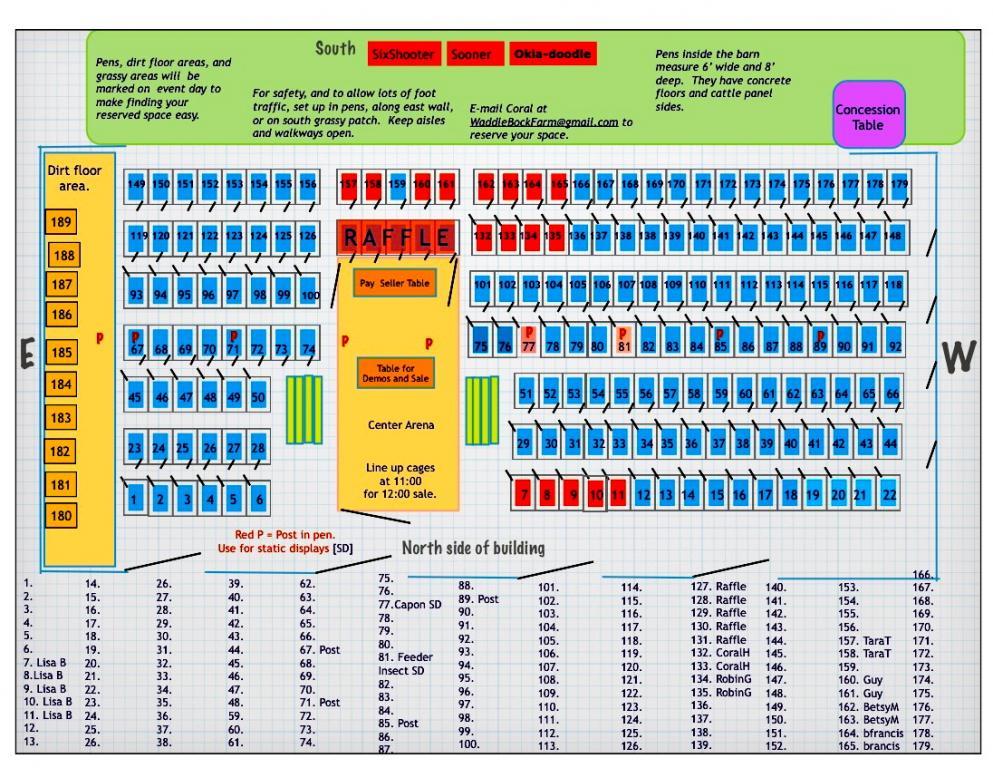Kass - I'm so sorry to hear about your cat. We had a manx, Picky Picky, for twelve years. I still see her shadow chasing mice.
Monty - Tear out the bermuda and grow little bluestem, feather reed grass, or prairie dropseed grass. These are ornamental grasses that require very little maintenance, and you can tell your DW they are ornamental, because they are. You'll attract wild birds and quail, which will increase your photo opportunities. If you're going to raise grass, then it might as well be awesome grass: even my goats won't eat bermuda.
Lots of people are visiting the planning thread for the North East Oklahoma Chicken Stock (N.E.O.C.S.). If you would like to reserve a space to set up to sell your hatching eggs, chickens, waterfowl, quilts, jams, jellies, turkey diapers, etc., please let me know. There will be a master map made for event day so that buyers can scan the map for specific breeds, arts and crafts, or other sale items. I will keep a current map on the planning thread, but here's what it looks like now. Red spaces are reserved already. You can send me an e-mail of PM to reserve your space.

Monty - Tear out the bermuda and grow little bluestem, feather reed grass, or prairie dropseed grass. These are ornamental grasses that require very little maintenance, and you can tell your DW they are ornamental, because they are. You'll attract wild birds and quail, which will increase your photo opportunities. If you're going to raise grass, then it might as well be awesome grass: even my goats won't eat bermuda.
Lots of people are visiting the planning thread for the North East Oklahoma Chicken Stock (N.E.O.C.S.). If you would like to reserve a space to set up to sell your hatching eggs, chickens, waterfowl, quilts, jams, jellies, turkey diapers, etc., please let me know. There will be a master map made for event day so that buyers can scan the map for specific breeds, arts and crafts, or other sale items. I will keep a current map on the planning thread, but here's what it looks like now. Red spaces are reserved already. You can send me an e-mail of PM to reserve your space.

Last edited:


